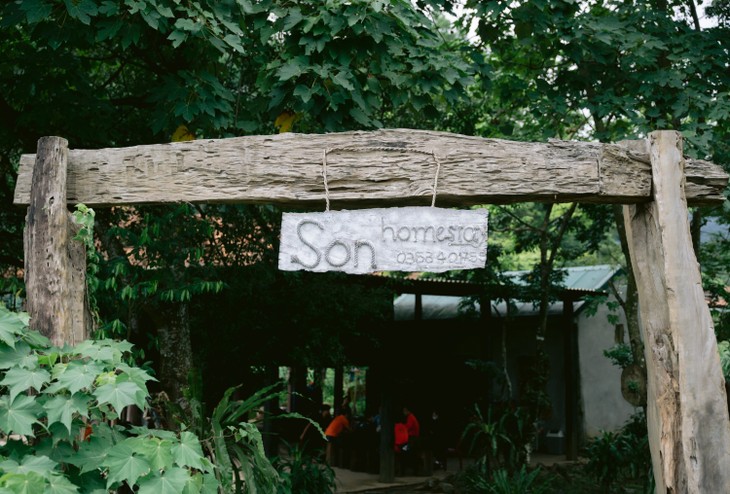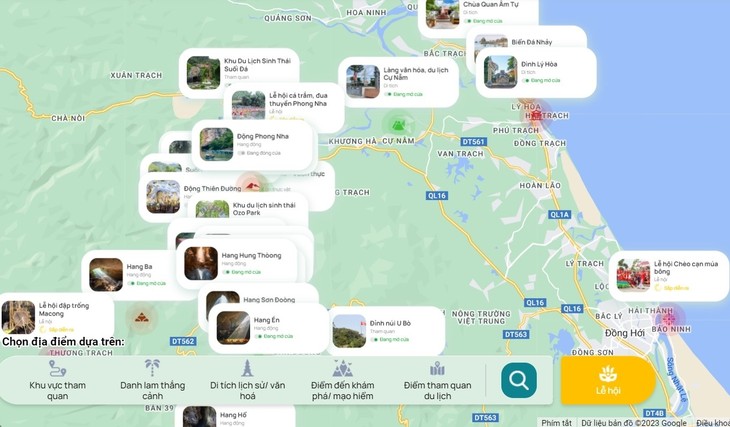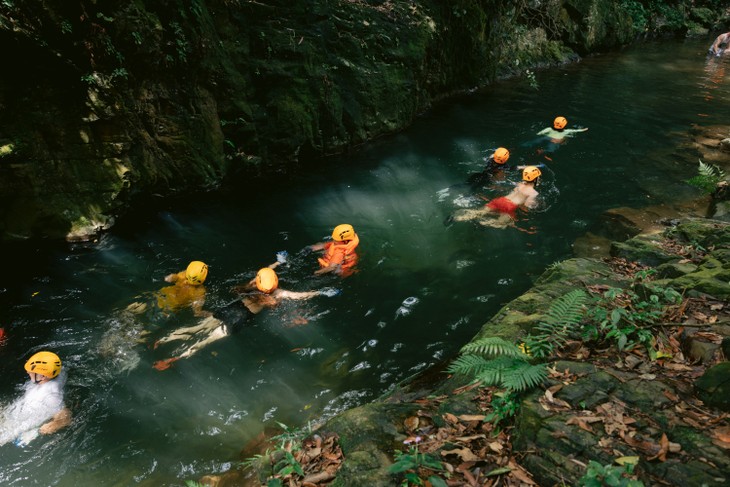(VOVWORLD) - Digital transformation in tourism is a shift to a customer-centered business model based on a digital value chain. Digital transformation requires businesses in the field to have long-term strategies and innovation from the organization to human resources and the business model.
 With just a smartphone, tourists can easily update their trips. (Photo: Thanh Hieu/VOV central region bureau) With just a smartphone, tourists can easily update their trips. (Photo: Thanh Hieu/VOV central region bureau) |
When applying digital transformation to tourism, tourism companies will enter a fair game in the virtual world where tourists can interact directly and publicly rate and comment on the quality of tourism services. That way’, tourism businesses can learn from their mistakes and improve their service.
In the mountains and forests of the Dong Chau-Khe Nuoc Trong Nature Reserve, Rum Ho hamlet in Kim Thuy commune, Quang Binh province, with its 100 Bru-Van Kieu ethnic households, appears on Google Maps as a small dot in the middle of the Truong Son Range.
 The homestay of Ms. Ho Thi Son in Rum Ho hamlet (Photo: Thanh Hieu/VOV central region bureau) The homestay of Ms. Ho Thi Son in Rum Ho hamlet (Photo: Thanh Hieu/VOV central region bureau)
|
The stilt house of Ms. Ho Thi Son has become a meeting place for eco-tourists interested in ethnic minority cultures. Ms. Son says her hamlet has already been connected to the national electricity grid and the locals now know how to use the internet. The government, functional agencies, and businesses have taught them basic communication skills for serving tourists, how to manage a homestay service, and how to promote their culture in an eco-tourism environment. Villagers have also been taught how to take photos and videos with their smartphones and use social networks to promote local tourism.
According to Ms. Son, villagers have benefited from digital transformation, which has shortened the distance between the Rum Ho community and the tourist market.
"My family's stilt house was left to me by my parents. We’ve replanted medicinal herbs from the forest to our yard, decorated the house with wooden furniture, and made advertising signs to let people know we offer homestays. My hamlet is becoming widely known. We’re ready to welcome tourists interested in community tourism," Ms. Son told VOV.
What Ms. Son and her family have gained is thanks to the support of Netin Travel, part of the Netin Group, that has more than a decade of experience offering tours in Quang Binh. In 2022 Netin Travel taught Rum Ho villagers how to use the internet to access digital apps.
Tran Xuan Cuong, Netin Travel’s Director, said his team of video content creators has posted videos of the scenic mountains and forests and the Van Kieu ethnic culture on digital platforms.
“Digital transformation plays an important role in introducing destinations that have long been undiscovered, like the tourist destinations in Rum Ho hamlet and the hamlets of the Van Kieu ethnic people in other remote areas,” said Cuong, adding, “It’s difficult to do tourism in these places, but when we share images of the locals, their culture and cuisine, many people take an interest and come to explore. Of course, it still takes time and effort to promote these places, but digital transformation has made it easier."
Digital transformation in tourism aims for green, sustainable growth. But there remain many challenges, one of which is the competition on digital platforms, which requires tourism businesses to keep turning out high-quality products and creative advertising.
Bui Xuan Thoan of Dong Hoi city, Quang Binh province, the administrator of a fan page promoting Quang Binh tourism, says digital transformation in green tourism requires tourism businesses to stay competitive and respond promptly to customer demands.
Thoan said it’s because today, with just a smartphone, it’s easy to create a beautiful video to introduce a destination and send it out.
“Those working in tourism and service need to be clever about using digital technology to create attractive clips and post them on digital platforms like TikTok, YouTube, and Facebook," Thoan noted.
 The interface of Quang Binh tourism digital map (Photo: Thanh Hieu/VOV in the central bureau) The interface of Quang Binh tourism digital map (Photo: Thanh Hieu/VOV in the central bureau) |
Cuong of Netin Travel admits that digital transformation offers both opportunities and challenges for small- and medium-sized enterprises. “SMEs often have more difficulty accessing technology and capital. It takes time and money to create a tourism product, build a brand, and promote a location," according to Cuong.
Tourism experts say a major barrier in developing community tourism and green tourism in ethnic minority areas is the locals’ lack of awareness and access to information technology. Many ethnic minority areas don’t yet have access to the internet or to the national electricity grid.
Bui Trung Nghia, Vice President of the Vietnam Chamber of Commerce and Industry, called on the tourism industry to set development priorities for digital tourism and smart tourism toward forming a smart tourism ecosystem and supporting sustainable green tourism development.
Nghia said the digital transformation of Vietnam's tourism sector is facing barriers due to the uneven quality of labor, limited management skills, and inappropriate technological infrastructure and solutions, and our tourism services are lagging behind those of other countries in the region.
“The process requires greater determination, innovation, investment in technology, and commitment to changing approaches and methods to promote and manage tourism activities on digital platforms," Nghia added.
 Tourists enjoy the time by nature in Quang Binh province (Photo: Thanh Hieu/VOV central region bureau) Tourists enjoy the time by nature in Quang Binh province (Photo: Thanh Hieu/VOV central region bureau) |
Ha Van Sieu, Deputy Director of the Vietnam National Authority of Tourism, said that since the COVID pandemic, Vietnam’s tourism industry has completely changed the way it does tourism by embracing the trend toward green, sustainable tourism.
To achieve the goal set for this year, Sieu underscored the need to improve human resources, service quality, and service infrastructure. “Digital transformation needs to be accelerated. More should be done to promote Vietnamese tourism in major markets, especially comprehensive strategic partners like China, Japan, and South Korea, and in new markets in the US and India," said Sieu.
According to a tourism sector plan approved in mid-June, Vietnam aims to become an attractive destination with a high level of tourism development and a country where tourism is a key economic sector that promotes green growth. By doing so, Vietnam hopes to welcome 25-28 million international visitors by 2025 and 35 million by 2030.